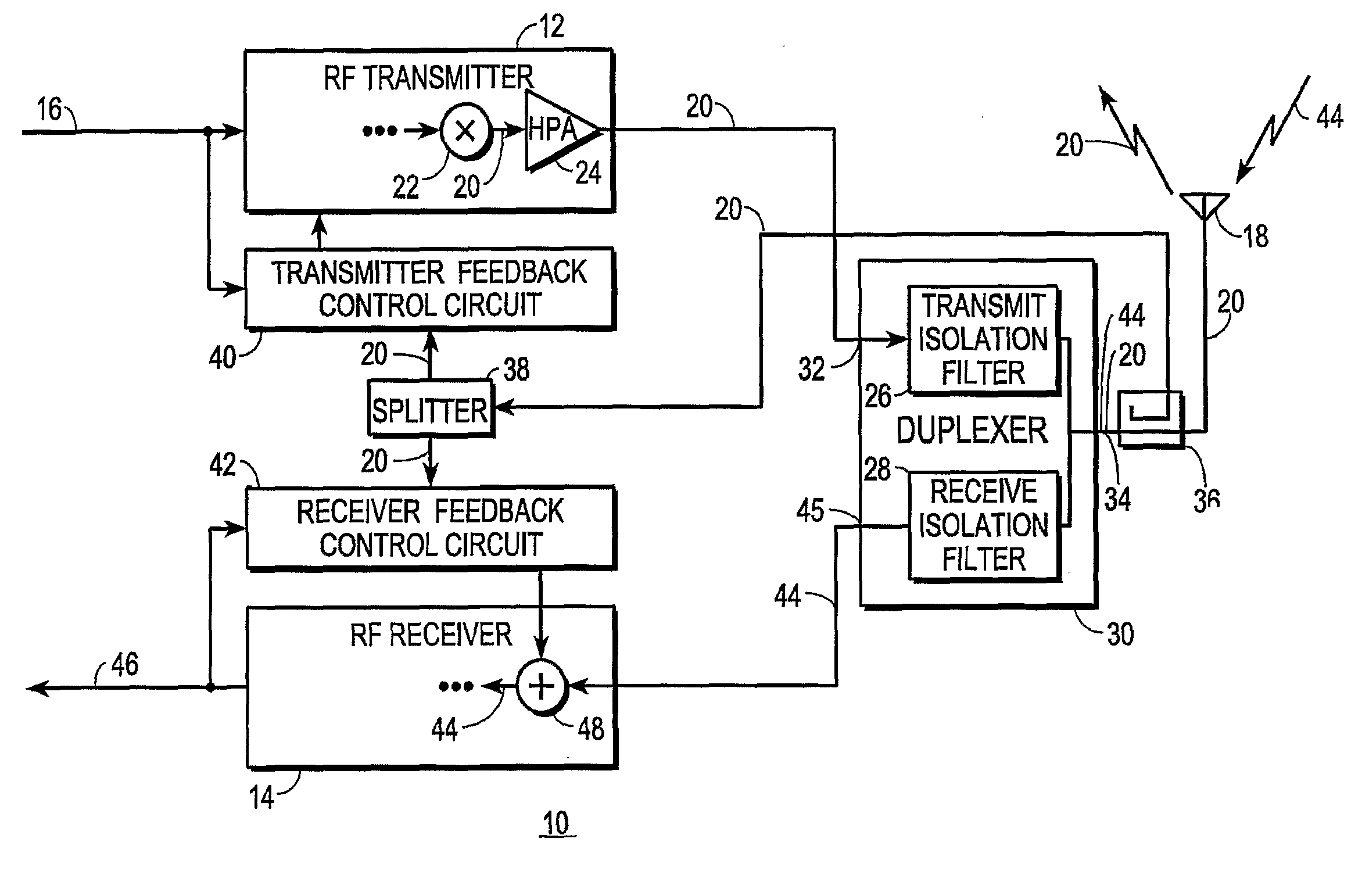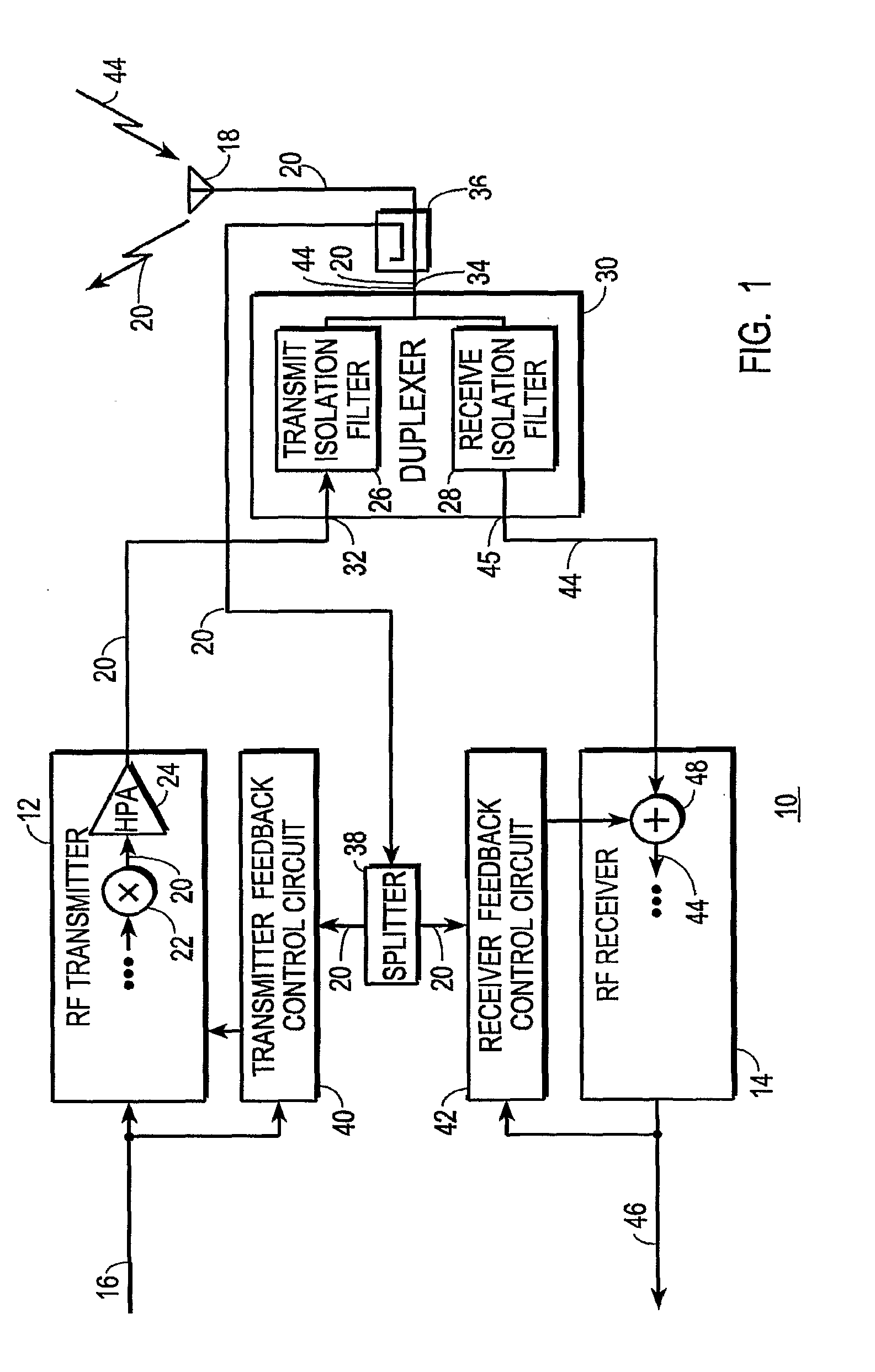Transceiver with Compensation for Transmit Signal Leakage and Method Therefor
a technology of transmit signal and compensation, applied in the field of transmission devices, can solve the problems of low degree of cross modulation, inability to successfully process the input circuit of the receiver's receive signal, and insufficient isolation of separate transmit and receive bands
- Summary
- Abstract
- Description
- Claims
- Application Information
AI Technical Summary
Benefits of technology
Problems solved by technology
Method used
Image
Examples
Embodiment Construction
[0035]FIG. 1 shows a block diagram of a radio-frequency (RF) transceiver 10 configured in accordance with the teaching of the present invention. Transceiver 10 includes an RF transmitter 12 and an RF receiver 14. Transceiver 10 is the type of transceiver that may be used at a cellular telephony cell-site base station, but transceiver 10 may be used in other applications as well, including mobile subscriber equipment (e.g., cell phones, laptops, etc.).
[0036]A digitally modulated forward data stream 16 is provided to an input of RF transmitter 12. In a preferred embodiment, forward data stream 16 is a forward communication signal that conveys information and is arranged as a complex data stream having quadrature phase components. Those skilled in the art will appreciate that the complex notation is omitted herein from the figures in order to simplify the presentation of this subject matter. Forward data stream 16 propagates in a forward direction with respect to transmitter 12. In oth...
PUM
 Login to View More
Login to View More Abstract
Description
Claims
Application Information
 Login to View More
Login to View More - R&D
- Intellectual Property
- Life Sciences
- Materials
- Tech Scout
- Unparalleled Data Quality
- Higher Quality Content
- 60% Fewer Hallucinations
Browse by: Latest US Patents, China's latest patents, Technical Efficacy Thesaurus, Application Domain, Technology Topic, Popular Technical Reports.
© 2025 PatSnap. All rights reserved.Legal|Privacy policy|Modern Slavery Act Transparency Statement|Sitemap|About US| Contact US: help@patsnap.com



